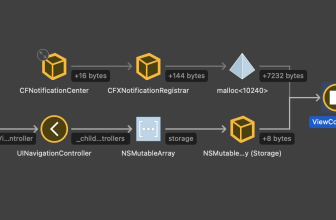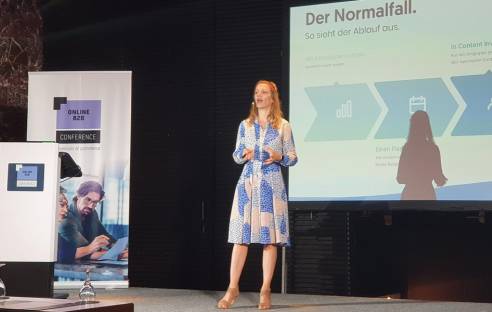In recent years, due to the corona situation, budget planning for CIOs has not been plannable or unplannable in the long term. For the New Year 2022, the question therefore arises as to which tools are needed in a still hybrid working world in order to continue to be prepared for uncertain times. […]
No one can give an exact statement about the future at the moment. However, AI solutions have proven their worth. CIOs therefore drive best if they know the fields of application and the limitation of the use of AI tools – be it the use of solutions for intelligent document processing or the use of process intelligence. A deep understanding of the actual processes in the company can be the decisive factor for CIOs to choose the right AI tools for their company for 2022.
Digital projects often fail because the technologies used did not work as expected. This makes it clear that one of the most important factors for successful IT budget planning is not to invest the most money, but to use it sensibly and purposefully. CIOs should therefore continuously get an accurate picture of existing processes in the company in order to be able to determine where which investments bring the greatest benefit. In terms of process automation, this also means that CIOs have to deal with which processes should be automated in their company at all.
An important step in this: to develop an essential understanding of the process sequences. In order to avoid an unsuitable process being automated or another team being delayed by automation, it is important to understand the process sequences before jumping into a project. The result of a recent study, for example, shows how frustrating and expensive poorly planned processes in the company can be, according to which up to a quarter of employees (25%) spend eight hours a week searching for information from documents – and thus lose an entire working day of time every week. Only when you have a realistic overview of how employees interact with each other and with external stakeholders, companies can gain and use important insights into insights about processes. For example, creating a digital twin of process flows is a useful way to analyze the interaction data of desktop users with process details from system event data. If the relevant information about process sequences is available, the process intelligence provides important data on the effects that the planned automation could have on the process.
Uncover hidden costs
Another aspect that plays a major role in the budget planning of digital projects: hidden costs. These are often forgotten during planning when it comes to robot-assisted process automation (RPA). This is especially true in situations where the limitations of tools such as RPA are not sufficiently discussed. RPA robots are currently gaining increasing popularity in automated document processing. However, it is often neglected that RPA robots alone are not yet able to recognize and process unstructured data. However, unstructured data accounts for up to 80% of business-related documents. In addition, RPA has also become a popular tool to replace manual data entry. But at this point, too, the challenge lies in the accurate and efficient recognition of which goals should be achieved with the data. Once the knowledge about the company’s own processes is available, CIOs can avoid unnecessary follow-up costs and plan the use of relevant technology in a targeted manner.
The good news: the technologies are now so advanced that it is possible to equip RPA robots with cognitive AI skills. This combined use of technical solutions enables companies to achieve intelligent document processing (IDP) tailored to their needs. Depending on requirements, the robots can therefore be enabled not only to recognize content and its context from unstructured data, but also to understand it. In this way, they provide companies with important insights into the information contained in the documents and thus support decision-making processes.
One area of application where these smart combinations are already being used is the financial industry. For example, many banks use RPA to support the processing of loan applications. To do this, they used a combination of IDP and RPA to filter and extract the relevant information from the applicants’ documents. As a result, the applications can be processed many times faster and error-free than by manual processing of the documents. This allows banks to approve loans faster and with accurate information. Similarly positive experiences have also been made by entrepreneurs in the real estate industry when applying for mortgages. Through the targeted use of intelligent RPA robots, the companies were not only able to speed up the mortgage process, but also enable their customers to apply for the mortgage from the comfort of their homes. Thus, not only the banks and real estate companies themselves benefit from the improved processes, but also their applicants and customers.
No Code/Low Code remains a trend
CIOs should also keep an eye on no Code/low Code solutions for 2022. These are particularly attractive for planning, as time-consuming and cost-intensive implementations are eliminated. By using No Code/ Low Code platforms, RPA robots can be easily equipped with appropriate skills by business users in the company. No Code/ Low code platforms, for example, provide their users with ready-made skills and enable an individual composition of these skills according to a modular principle. In addition, new skills can also be created depending on the application scenario and company needs. No Code/Low code solutions can also be found for download on popular online marketplaces.
It doesn’t always have to be the big solution: Traditionally, data collection is still a back-office function, but IDP solutions are now also available in the form of mini-apps, so that the application is now the focus of the employee. For example, employees can use No Code/Low Code platforms to independently create mini-apps or applets to support their everyday work. These apps can either be configured to be used within a larger overall process or can take over entire processes. The functions of the app can be individually tailored to the specific requirements of an industry and a company. For example, apps can be programmed that support proof of identity during customer onboarding. The customer himself can then use the app independently to carry out a tailor-made identity check. After that, the customer is automatically redirected back to the remaining onboarding process. The advantage is therefore obvious: IT managers are relieved of smaller routine tasks of employees, which in turn saves resources and capacities in IT.
For successful budget planning in the coming year, CIOs should ask themselves three questions: First, which processes benefit most from digitization and what impact does this change have on adjacent processes? Secondly, which tools are best suited for the respective digital project? And thirdly, what exactly are the costs associated with these tools and are there any relief options in IT? In this context, process intelligence has developed into a strategic tool that helps companies to understand where investments can bring the greatest benefit in the context of digital transformation initiatives. This, coupled with a better understanding of the limitations and application areas of common AI tools, enables CIOs to make the best decisions for their company for new investments.
*The author Markus Pichler is Vice President of Sales Europe at ABBYY.














